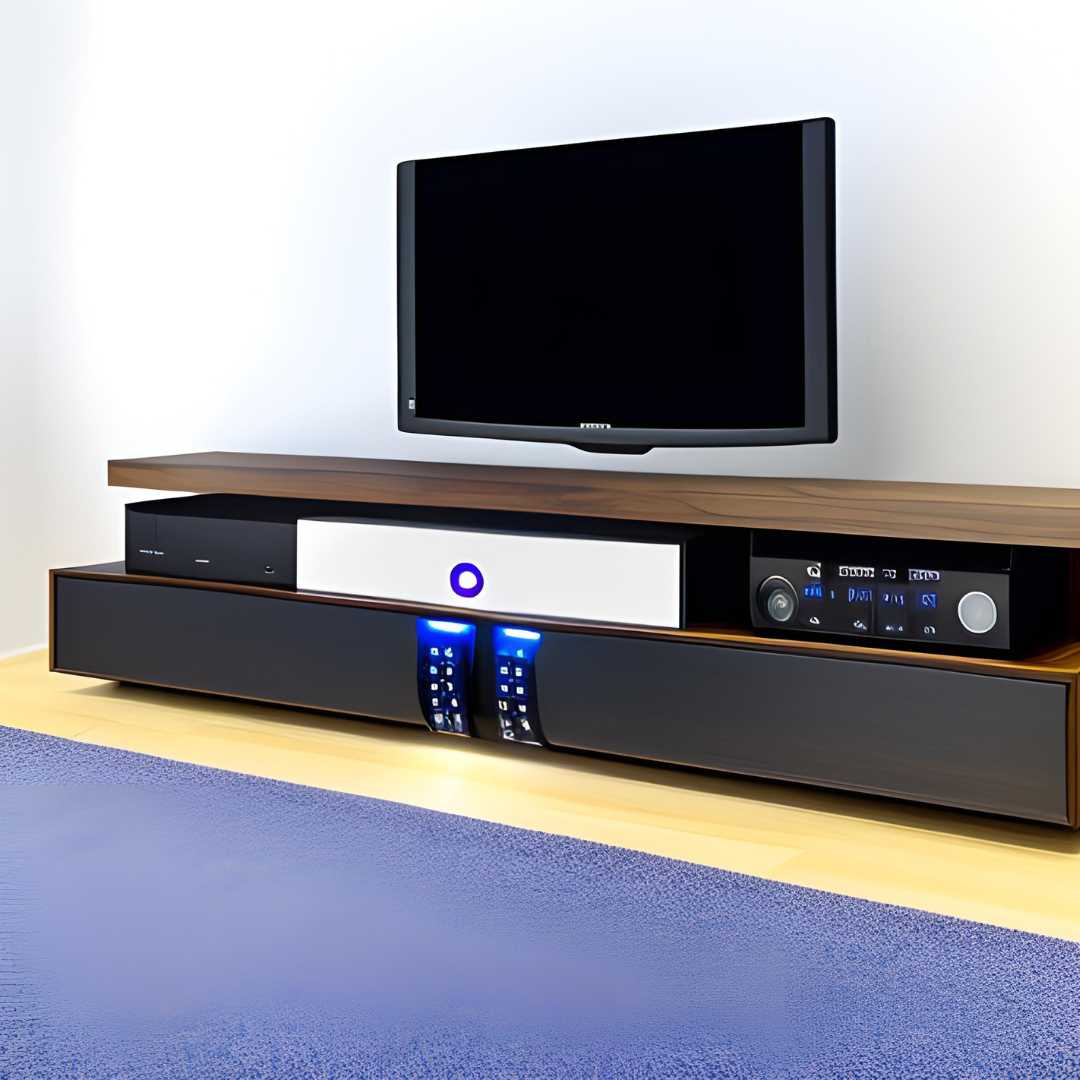Upgrade your theatre game with a home theatre power manager

Contents [Show]
Importance of using a power manager in a home theatre system
Using a power manager in a home theatre system offers numerous benefits, enhancing performance, protection, and longevity. Some of the key advantages include the following:
Surge protection:
Home theatre systems often include expensive electronic equipment that electrical surges or voltage spikes can damage. A power manager offers robust surge protection, helping to shield your investment from harm.
Voltage regulation:
Fluctuations in the electrical supply can affect the performance of your home theatre system. A power manager maintains a consistent voltage level, ensuring optimal functioning and reducing wear and tear on components.
Noise filtration:
Electrical noise from other devices or appliances can interfere with your home theatre system's audio and video signals. Power managers include noise filtration technology to minimize interference and maintain a high-quality experience.
Energy efficiency:
Power managers can help to conserve energy by shutting off unused components or managing the power consumption of connected devices. This can reduce your energy bills and environmental impact.
Device organization:
With multiple components connected to your home theatre system, cable management can become challenging. A power manager provides a centralized hub for connecting and organizing your devices, simplifying setup and maintenance.
Extended component life:
By protecting against power surges, regulating voltage, and reducing electrical noise, a power manager can extend the life of your home theatre components, saving you money in the long run.
Convenience:
Some power managers come with additional features, such as remote control capabilities or timed outlets, that make managing your home theatre system easier.
Safety:
By providing overload protection and preventing potential electrical fires, a power manager can help ensure the safety of your home and family
Features of a Home Theatre Power Manager
A home theatre power manager is designed to protect and optimize the performance of your audio and video equipment. Key features of a home theatre power manager include:
Surge protection:
Safeguards your home theatre system from voltage spikes and electrical surges that can cause permanent damage to sensitive electronic components.
Voltage regulation:
Maintains a stable voltage supply to your home theatre system, preventing fluctuations that could impact performance or damage your equipment.
Noise filtering:
Reduces electrical noise and interference from other devices or appliances, ensuring a clearer audio and video signal for an improved home theatre experience.
Power conditioning:
Improves the quality of the electrical power being supplied to your home theatre components by removing impurities and smoothing out irregularities in the electrical waveform. This can result in better performance, reduced wear and tear on components, and increased longevity.
Energy efficiency:
Some power managers are designed to reduce energy consumption by shutting off unused components or intelligently managing power usage.
Device organization:
A power manager can serve as a centralized hub for connecting and organizing the cables and components of your home theatre system.
Remote control capabilities:
Some power managers allow you to control power settings or individual outlets remotely, providing added convenience.
Timed outlets:
Certain power managers may offer outlets with built-in timers, allowing you to schedule when specific components are powered on or off.
USB charging ports:
Some models may include ports for charging devices like smartphones or tablets, adding extra utility to your home theatre setup.
Overload protection:
Protects your home theatre components from damage caused by excessive electrical current, reducing the risk of electrical fires and equipment failure.
Benefits of Using a Home Theatre Power Manager
A home theatre power manager is a valuable investment that provides a range of benefits for your audio and video equipment. These benefits are detailed below:
Protection against power surges and voltage fluctuations:
Electrical surges or voltage spikes can cause irreversible damage to your home theatre components. A power manager can help safeguard your equipment and prevent costly repairs or replacements by providing robust surge protection. Additionally, voltage regulation maintains a stable power supply, which is essential for your devices' optimal performance and longevity.
Improved audio and video quality:
A power manager can enhance your home theatre experience by filtering out electrical noise and interference from other devices or appliances in your home. This noise reduction leads to clearer audio and video signals, resulting in better overall quality for both sound and visuals. Power conditioning also helps improve the quality of electrical power supplied to your components, which can contribute to better performance.
Extended lifespan of audio and video equipment:
By protecting against power surges, regulating voltage, and reducing electrical noise, a power manager can extend the life of your home theatre components. This saves you money in the long run and ensures that your investment in high-quality equipment is protected.
Reduced power consumption and energy bills:
Some power managers are designed to manage energy consumption intelligently by shutting off unused components or optimizing power usage across devices. This can result in lower energy bills, reducing overall energy costs and environmental impact. Power managers with built-in energy-saving features like timed outlets or energy-efficient standby modes can contribute to reduced power consumption.
Convenient control of multiple devices:
A home theatre power manager can centralize control of your entire system, making it easier to manage multiple components. Some power managers also offer remote control capabilities or smart home integration, allowing you to control power settings or individual outlets from a distance or through a smart home platform. This added convenience simplifies the operation of your home theatre system and can save you time and effort in managing your devices.
Types of Home Theatre Power Managers
Various types of home theatre power managers are available, each offering different features and levels of protection. Some common types include:
Standalone power managers:
These devices provide power management features like surge protection, voltage regulation, and noise filtering. They are designed for the sole purpose of optimizing and protecting your home theatre system, offering a dedicated solution for power management. Standalone power managers are typically more advanced and provide higher protection than basic surge protectors.
Power managers integrated into a surge protector or UPS (Uninterruptible Power Supply):
This type of power manager combines the functionality of a surge protector or a UPS with power management features. They provide surge protection and often include additional benefits like voltage regulation, noise filtering, and power conditioning. UPS units also supply backup power to your home theatre system in case of a power outage, ensuring your devices function for a limited time.
Smart power managers with automated controls:
These power managers incorporate smart features and connectivity options, allowing you to control and monitor your home theatre system remotely or through a smart home platform. They may offer advanced energy-saving features, like automated power scheduling, device usage monitoring, or intelligent power distribution. Smart power managers can also be integrated with other smart devices, like voice assistants or smart home hubs, to seamlessly control your home theatre system.
When selecting a home theatre power manager, consider the specific needs of your setup and the level of protection and control you require. A standalone power manager may be sufficient for smaller systems, while an integrated solution with a UPS might be more suitable for larger, more complex setups.
A smart power manager may be the ideal choice if you're looking for advanced control and energy-saving features. It's essential to carefully evaluate the options available and choose the type that best meets your requirements to ensure optimal performance and protection for your home theatre system.
How to Choose the Right Home Theatre Power Manager
Choosing the right home theatre power manager is crucial for ensuring optimal audio and video equipment performance, protection, and longevity. Here are some factors to consider when making your decision:
Consideration of power requirements:
Determine the power requirements of your home theatre system by adding up the total wattage or amperage of all connected components. Ensure the power manager you choose can handle these requirements without being overloaded. Additionally, consider the number of outlets you'll need to accommodate all your devices.
Comparison of surge protection and voltage regulation capabilities:
Evaluate the surge protection features of different power managers, paying attention to their joule ratings and response time. Higher joule ratings indicate better protection against power surges; faster response times mean quicker protection. Voltage regulation capabilities are also important, as they maintain a stable power supply for your equipment and prevent damage from voltage fluctuations.
Assessment of noise filtering and power conditioning features:
Examine potential power managers' noise filtering and power conditioning features. Better noise filtering ensures clearer audio and video signals, while effective power conditioning can improve the overall performance of your home theatre system. Look for models with higher noise filtering ratings and advanced power conditioning technologies.
Compatibility with existing equipment:
Make sure your power manager is compatible with your home theatre components, including any smart home devices or platforms you may be using. If you have specific requirements, such as rack-mountable design, remote control capabilities, or USB charging ports, ensure the power manager meets these needs.
Budget considerations:
Home theatre power managers come at various prices, depending on their features and capabilities. Determine your budget and evaluate the options within that range. Keep in mind that investing in a quality power manager can save you money in the long run by protecting your equipment and reducing energy consumption.
How to Install and Set Up a Home Theatre Power Manager
Installing and setting up a home theatre power manager is typically straightforward and can be completed by following these steps:
Placement of power manager in the home theatre system:
-
Choose a location for the power manager that is easily accessible and close to your home theatre components.
-
Ensure that there is proper ventilation around the power manager to prevent overheating.
-
If the power manager is rack-mountable, secure it in your equipment rack according to the manufacturer's instructions.
Connection of devices to the power manager:
-
Start by turning off and unplugging all your home theatre components.
-
Connect each device to the appropriate outlet on the power manager, ensuring that high-power devices like amplifiers or subwoofers are connected to outlets specifically designed for them (if available).
-
Organize and secure the cables neatly to prevent tangles and maintain a clean setup.
Configuration of automated controls (if applicable):
If your power manager has smart features or automated controls, follow the manufacturer's instructions to configure these settings. This may involve connecting the power manager to your home Wi-Fi network, integrating it with your smart home system, or setting up schedules for powering devices on or off. Customizing these settings can optimize energy consumption and improve the overall convenience of your home theatre system.
Testing of power manager functionality:
Once all devices are connected, and configurations are set, plug the power manager into a wall outlet and turn it on. Power on your home theatre components individually, ensuring that they function correctly and that the power manager provides adequate power and protection. Check for any issues with audio or video quality, and make any necessary adjustments to the power manager settings.
Regular maintenance: Periodically check the power manager for signs of wear or damage, and keep it clean and dust-free to ensure optimal performance. If your power manager has a replaceable surge protection module, monitor the indicator lights (if available) and replace the module when necessary to maintain effective surge protection.
Are you a fan of home theatre systems? Do you love experiencing the immersive audio and video that they offer? If you do, you know that much equipment goes into creating that perfect home theatre experience. And with all those devices comes the need for proper power management.
That's where a home theatre power manager comes in. It's a device that helps protect your valuable audio and video equipment from power surges, voltage fluctuations, and other electrical issues.
In this blog post, we'll discuss the benefits of using a home theatre power manager, how to choose and how to install and set it up. So, stick around if you want to take your home theatre experience to the next level!
What a home theatre power manager is?

A home theatre power manager is a device that helps manage the power supply to your home theatre system. It is a central hub for all your audio and video equipment, protecting them from power surges, voltage fluctuations, and other electrical issues. A power manager can also provide noise filtering, power conditioning, and voltage regulation to ensure your equipment receives a clean and stable power supply, improving audio and video quality.
n addition, some power managers come with automated controls that allow you to manage your devices and conserve energy conveniently. With a home theatre power manager, you can extend the lifespan of your audio and video equipment while also providing them with the best possible power supply.
Conclusion
A home theatre power manager is vital to any home theatre system, offering numerous benefits such as surge protection, voltage regulation, noise filtering, power conditioning, and energy efficiency. It not only helps to protect your valuable audio and video equipment from potential damage but also improves overall performance and extends the lifespan of your components.
When choosing a power manager, it is essential to consider factors like power requirements, surge protection capabilities, noise filtering features, compatibility with existing equipment, and budget constraints. Proper installation and setup of the power manager can further enhance its effectiveness and ensure optimal performance of your home theatre system.
Investing in a high-quality power manager is a smart decision that can save you money in the long run, improve your home theatre experience, and provide peace of mind knowing your equipment is well protected


0 Comments